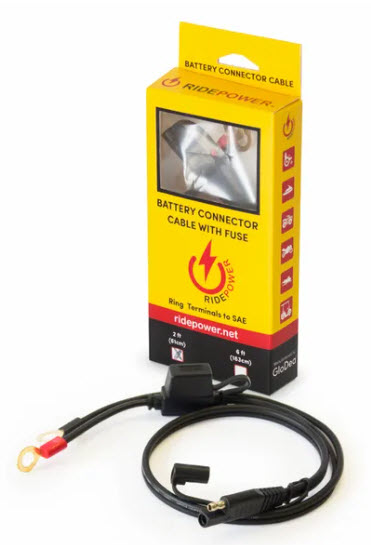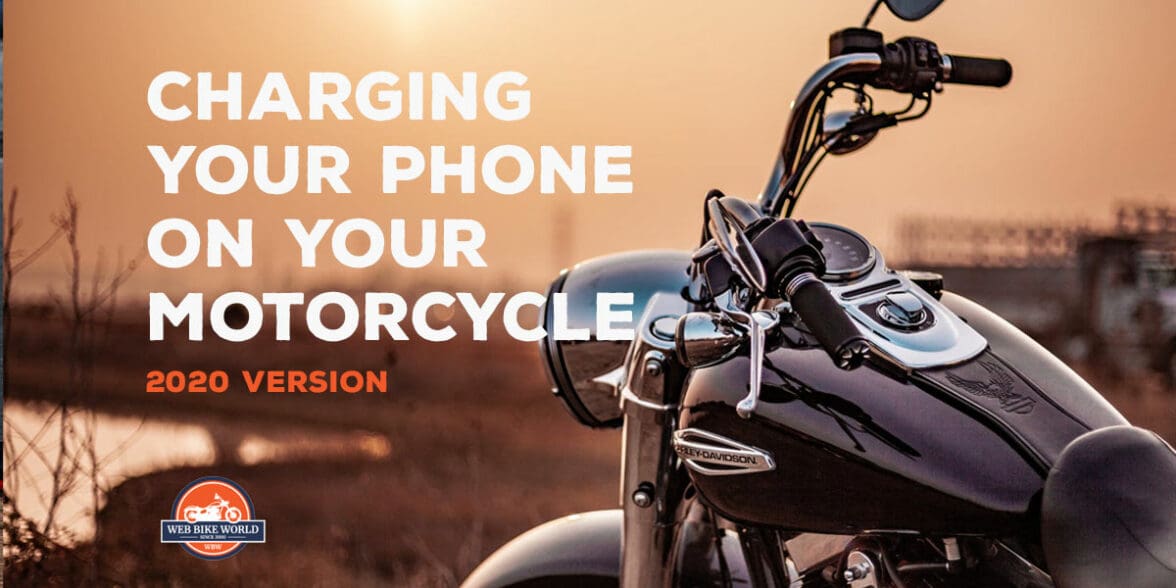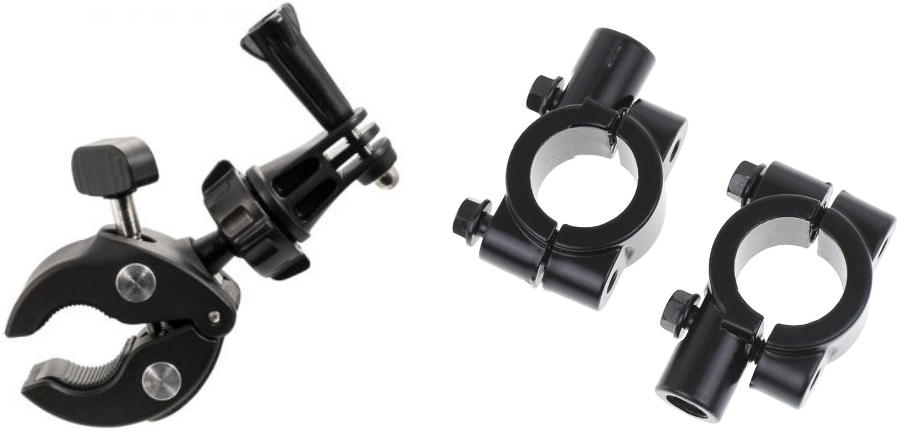Your phone can serve many functions, from being your onboard GPS system and music player to being your emergency communication device in the event of a breakdown or accident. Riding with a phone is smart and safe – always take one with you.
With that said, your phone uses power, and keeping it charged is obviously important. Charging your phone on a motorcycle presents unique challenges. Let’s take a look at what you need to know about charging your phone on your bike (as of late May 2020). Hopefully, we can help you find the solution that works best for you.
A Quick Primer on Motorcycles & Phone Chargers
It’s pretty clear that having a phone charger on your bike is smart. It’s one of your most useful and important tools out on the road. Your bike is basically a big power generator, so you have what you need to keep your phone’s battery charged if you can take the power from your motorcycle and convert it into energy for your phone.
This happens through cables and adapters. Your motorcycle battery will be 12-volt one most likely. The adapter coming from the power source (your battery) will convert the 12-volts into a more usable voltage for your phone and provide a charge to your phone’s battery. Phone chargers typically use 5-volts.
Before you just go out and grab some cables and an adapter, though, there are some notes I should make on both modern and vintage motorcycles.
Modern Bikes
Many modern motorcycles, such as the venerable Honda Goldwing, come with USB power ports already installed on the bike from the factory. If you have one, then forget the adapter. All you’ll need is a good USB charging cable. Some folks will just plug in the one that came from the phone.
That can work, but what you’ll find is those chargers aren’t up for the challenges of the road. They’re not prepped for powersports use and are susceptible to power surges, dirt, grime, and the elements when riding. It’s better to have a power cord designed specifically for powersports use.
Many modern motorcycles still lack USB ports. Never fear! There are solutions. This is where an SAE connection comes in.

One end of the cable connects to the terminals of your battery and the other offers an SAE connection. From there, you can either find a phone charging cable with an SAE connection or a SAE to USB adapter and then plug a USB cable into it.
Vintage Bikes
The story for vintage bikes is mostly the same. However, some vintage bikes will be more likely to throw power surges at your charging cable. This makes it extremely important to have a cable or adapter that comes with built-in surge protection.
Also, a note on battery voltage. As mentioned above, most modern motorcycles operate on a 12-volt system. This is true for many vintage motorcycles, too. However, depending on how old the bike is, you might have a 6-volt system.
If you have a bike with a 6-volt battery, you can make charging your phone work with a 5-volt power regulator. You need 5-volts of power for your phone. With the 5-volt regulator, you should have all the power you need. From there, all you need to do is get a set-up like described above.
Be Thoughtful About Connecting Up
Leaving a USB connection attached to your battery at all times will slowly drain it. Most USB ports don’t have an on-off switch. That means it will always pull a little bit of power from your battery. This shouldn’t be a problem if your bike doesn’t sit parked for a long time. However, if your bike sits, this small drain can pull enough power to kill your battery and prevent your bike from starting.
The solution? Disconnect the USB connection. The cables going from the battery to the SAE connection shouldn’t drain your battery. It’s just wires. But if you leave the USB connected, or some other type of outlet connected up, it may draw power.
A way around this is to wire in an on-off switch. However, this is usually more hassle than it’s worth. You can also connect your USB charging solution to part of your bike’s wiring diagram if you want. This will turn off power when the key is in the off position. However, yet again, this is usually more hassle than it’s worth. If you just remember to disconnect your USB port each time your bike will sit for more than a couple days, you shouldn’t experience any problems.
Wireless Charging (AKA: Induction Charging)
Wireless charging, or induction charging, is becoming more popular. This highly convenient solution allows you to not need a cable plugged into your phone. Simply put your phone down on the mount and it will charge. Due to this, every wireless charger I’ve found that’s made for a bike is also a phone holder/mount. Makes sense when you think about it. 😉
Wireless charging has some pros and cons worth considering:
Pros
- No Cable to Your Phone – Sometimes having a cable going to your phone can be a hassle. It’s another thing that gets in the way and having no cable directly connected to your phone is advantageous. It’s also one less thing to remember on a trip. A reduction of things to remember is a big win.–
- Reduction of Wear and Tear – Have you ever noticed how nasty the charging port on your phone can get? It can become worn out just like anything else. Not having to plug in keeps the hardware of your device in good condition.
- Reduces the Chance of a Power Surge – Most induction charging solutions won’t pass along power surges to your device, making them safer to use, especially in powersports applications.
- On-Off Switch – Remember the note above about disconnecting your USB port from your battery so as not to drain your battery? Well, most induction chargers have an on-off switch eliminating this problem.
- A “Home” for Your Phone – Some riders already have a phone mount that works as a home for their phone, but the induction charger can be that. Connect an induction charging mount to your handlebars and you have a place for your phone to always go when you’re on the bike.
Cons
- Doesn’t Work With Every Phone – Not all phones are compatible with wireless charging solutions. Check your phone’s specs to see if it can use an induction charger.
- More Expensive Charging Solution – Induction chargers are newer technology, and that usually translates to a higher price tag. Charging cables by comparison are usually inexpensive.
- Slower Charging Times – Induction charging typically takes longer than having a power cable connection. Depending on your needs this can be an issue out on the road.
- Still Have to Connect to Motorcycle Power Source – This is hardly a surprise, but the induction charger will still need to be connected to your motorcycle’s battery or wired into the wiring diagram, which as you know, means most of the information above still applies.
Mounting an Induction Charger to Your Bike
There are a few ways to attach an induction charger to your bike, but the most common by far is the clamp-mount – If you’ve ever attached anything to your bike’s handlebars, you probably used a clamp to do it. On the whole, a decently-made clamp mount is secure and drama free.
In the unusual event that the wireless charger you purchase doesn’t come with a clamp, you can find them inexpensively almost anywhere motorcycle accessories are closed.
How Motorcycles Have Influenced Phone Charging
Technology is always changing and adapting. Our smartphones have changed the way we do everything, from communicating with others to the routes we take, but motorcycles have the power to influence smartphone technology, too.
Without motorcycles and other powersports, there would be no need for more robust charging solutions. Companies like RidePower have made cables with built-in surge protectors, and crafted chargers designed to withstand the rigors of the road (see my recent review of one of their chargers). When riding a motorcycle, your phone and chargers experience things that would never occur inside a home or office. In that way, motorcycles have forced innovation.
Induction charging, while not completely purposely created for motorcycle applications, is another technology that is having to adapt to the powersports and motorcycling world. The simple fact of the matter is that riders need their phones and the standard phone charger doesn’t cut it in most two-wheeled situations.
We’re bound to see charging technology continue to innovate in the coming years. What will likely happen is that these innovations will be focused on convenience and rider ease-of-use. The goal will be to make it so you don’t have to worry about your phone’s battery anymore. You can simply connect it or set it on an induction charger and go for a ride.



